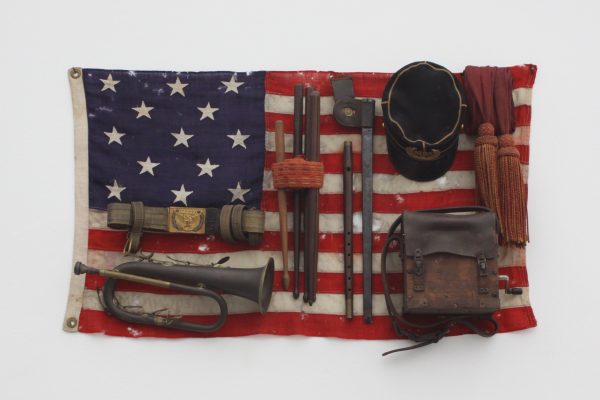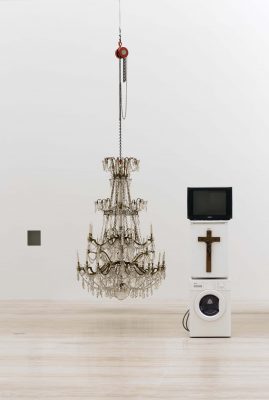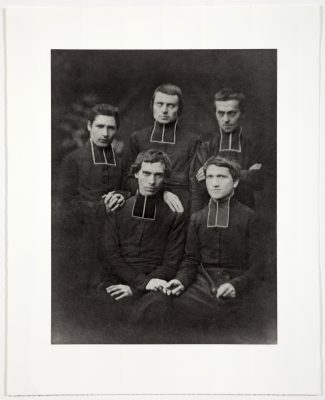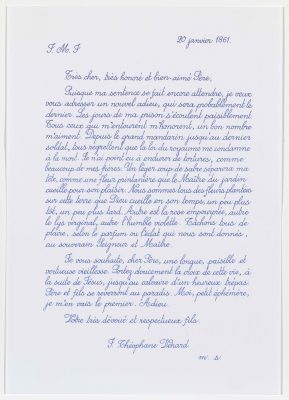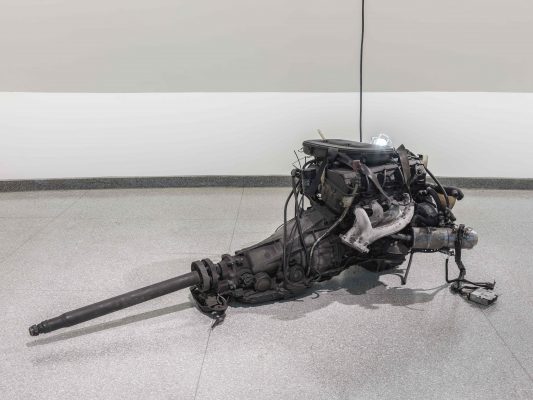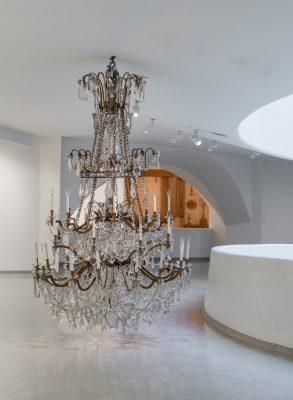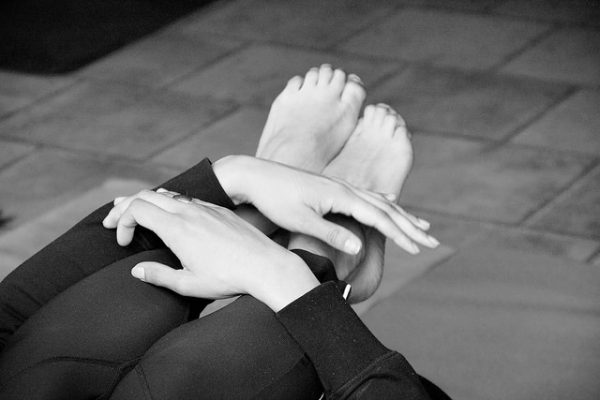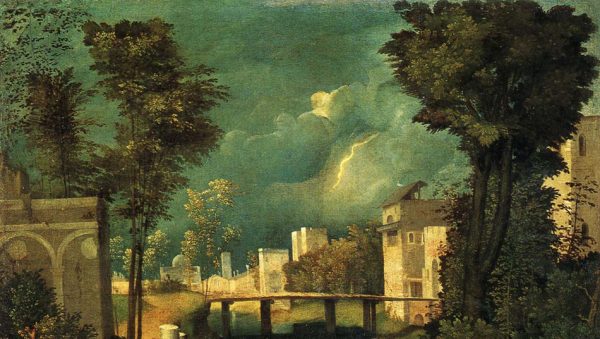‘When you love, you are nailed to the cross,’ says a character in Rainer Fassbinder’s film In a Year of 13 Moons (1978). In Cigarettes, Harry Mathews’s novel published in the same year, a character finds himself quite literally crucified, replete with a crown of thorns – a consequence, and perversion, of love. In Catholic theology, the idea of a love so pure as to evoke the ultimate sacrifice is approximated through the relic: a scrap of a shroud, a fragment of bone, a nail once pierced through flesh. Imbued with the charge of history and the promise of salvation, these items both fuel and sustain the particular desire for proximity to holiness among believers.
Pilgrims to Danh Vo’s mid-career survey at the Guggenheim Museum may find such desires pricked, teased, and thwarted by works that package the relic for the contemporary art market. The Danish-Vietnamese artist, known for conceptual installations comprising rare and curiously sourced ready-mades, has been a fixture in blue-chip galleries and private collections. At the Guggenheim, these objects are sparsely arranged on the museum’s winding ramp, where they are called upon to invoke grand themes: the legacy of American imperialism, and the artist’s lapsed Catholicism, among them. Vo was born in Bà Ria, Vietnam toward the end of the Vietnam War, and moved with his family to a refugee camp in Singapore, settling eventually in Denmark. Interspersing family photographs with artefacts from colonial Vietnam, the exhibition oscillates between intimate glimpses of the artist’s life and the sweep of history.
Vo’s connection to a network of high-profile lenders has abetted a practice of skilled connoisseurship that allows the artist to impress audiences by the sheer incredulity of his acquisition. Hung along the Guggenheim’s ramp is a chandelier from the former ballroom of the Hotel Majestic in Paris, where the Paris Peace Accord ending the Vietnam War was signed in 1973. In 2012, Vo acquired a group of objects from the estate of Robert S. McNamara – the American secretary of defence between 1961 and 1968 – when the Vietnam War began to escalate. Lot 20. Two Kennedy Administration Cabinet Room Chairs (2013) displays the titular objects stripped to their constituent parts. The singular components are enlivened with a sadomasochistic spark: black leather hangs on a nail in one corner; in another corner, the gaping Chippendale frame awaits.
Elsewhere, a collection of letters from then-Secretary of State Henry Kissinger to one Leonard Lyons, theatre critic for the New York Post, are arranged behind a glass display. Between the years 1969 and 1975, the statesman expresses his gratitude for Lyons’s gifts of ballet tickets, invitations to see Hello Dolly! and the like. Seen together, Kissinger’s tone in these letters ranges from courteous, to obsequious, and perhaps, even to seductive. ‘I would choose your ballets over contemplation of Cambodia any day – if only I were given the choice,’ writes Kissinger in May, 1970. He concludes: ‘Keep tempting me; one day perhaps I will succumb.’
Private passions, Vo suggests, lend an ironic tenor to public histories, even if these passions are mundane or trivial. It is with the focused passion of a collector that the artist accumulates and arranges his own legacy. In Oma Totem (2009), Vo arranges a Phillips television set, a washing machine, and a refrigerator into a neat stack, affixed with a wooden crucifix in front. The objects belonged to the artist’s grandmother and were given to her by a relief programme when she arrived in Germany in 1980; seen here, they act as an index of what the artist has referred to as the ‘tiny diasporas of a person’s life’.
The curators of the exhibition have noted that Vo’s work is ‘animated by the act of possession’. It can also be said that in equal measure, it is animated by loss. Pinned to the wall behind Oma Totem is the 2009 work Uro, a set of metal keys on a chain. They open the doors to the homes the artist once shared in Berlin with his former partner Michael Elmgreen, a car that Elmgreen gifted Vo, and the hotel room where their relationship ended. These prosaic objects lend Vo’s work its erotic charge: carefully arranged and hollowed of their original purposes, they still evoke the significance of past intimacy. In excavating the material artefacts of private and public histories, Vo suggests that there is still much to believe in, even for the cynics among us.
